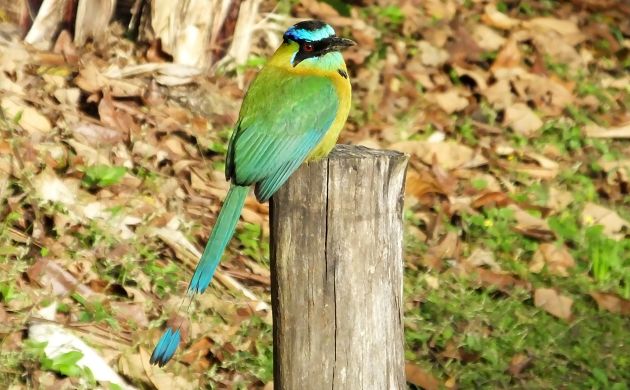
In Costa Rica, official, enforced quarantine hasn’t happened yet. At the moment, thanks to the government getting serious about this darn thing earlier rather than later, the number of new cases per day in Costa Rica has been very much linear in nature. Thankfully, as of yet, it seems like enough people have stayed home and were careful about social distancing and hand washing to prevent an exponential increase in this awful form of illness. That could certainly change at any time but for the moment, the distancing is paying off and although there are some driving curfews and restrictions, members of the birding community could still head out to watch birds.
That said, they aren’t. Based on eBird and Facebook reports, it looks like most local birders are sticking to yard birding. There are very few reports from sites further afield although with all public and most private parks closed, a birder can’t go to such official protected areas anyways. These days, as with so many other places, in Costa Rica, yard birding is what most of us are up to. It means that I won’t be seeing any umbrellabirds any time soon but then again I probably wouldn’t be seeing that endangered bird anyways. However, don’t get me wrong, I’m not disappointed, there’s plenty of birds to see from the homestead and this gives me a chance to see what can occur when focusing on one small area. Migration also leaves the door open for connecting with some unusual birds, scoping flocks of migrating swallows, and getting to know this patch better than I had ever hoped or wanted to. It’s all good, as of April 6, my yard list has more than 60 species and will certainly grow in the coming days.
My yard birding in Costa Rica is similar to the majority of yard birding elsewhere in that most of us do not live in wild places surrounded by beautiful forest. Some lucky birders have that chance but most of us are in urban areas or other zones impacted by people in some way or another. Fortunately, our yard list rather near the airport in the Central Valley is boosted by a riparian zone and a few farms within ear shot and is why we have detected such species as Barred Antshrike and White-eared Ground-Sparrow.
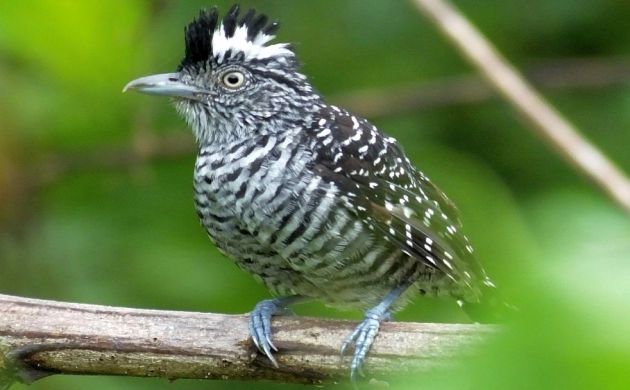 Barred Antshrike
Barred Antshrike
We have also seen a few flyby Giant Cowbirds in addition to more common, expected garden birds like Red-billed Pigeon, cheerful Clay-colored Thrushes, and friendly Rufous-naped Wrens.
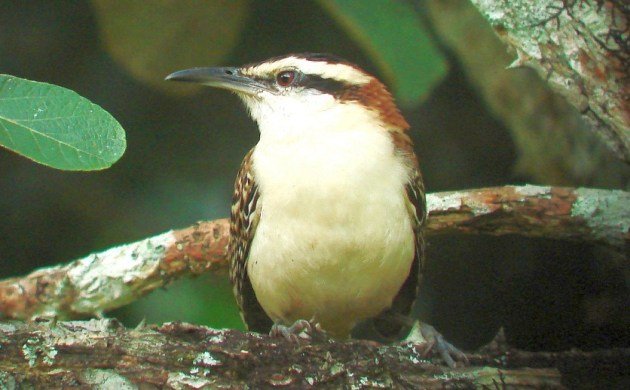
Rufous-naped Wren
At night, with luck, I might hear migrant Upland Sandpipers and thrushes, other birders have detected a few. Speaking of other birders in Costa Rica, this is how some are enjoying the birding scene in other parts of the country:
Highland Yard Lists
Up above 1,600 meters, local birders who live near some forest are in luck because they could add anything from Spangle-cheeked Tanagers to Resplendent Quetzals. More likely are a suite of sparkling hummingbirds, the eye-catching Flame-colored Tanager, acrobatic Red-faced Spinetails, and various other species. At Casa Tangara dowii, Serge Arias has been enjoying daily views of Buffy-crowned Wood-Partridge, Buff-fronted Quail-Dove, and other choice species.
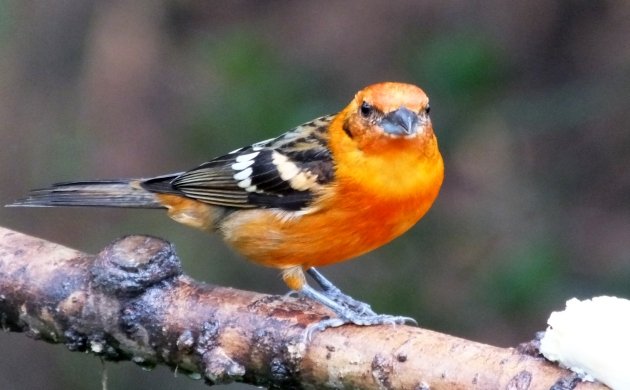
Flame-colored Tanager
The Caribbean Lowlands
The humid lowlands are just on the other side of the mountains (volcanoes) visible from the back balcony. Way over there are rainforests and other habitats with hundreds of bird species. A yard list adjacent to such choice habitats could easily yield a hundred species in a day and will likely turn up more during the course of the pandemic. Some of the sweet species there can include flyby Great Green Macaws among other parrot and parakeet species, toucans, various woodpeckers, flocks of migrating Mississippi Kites and other species.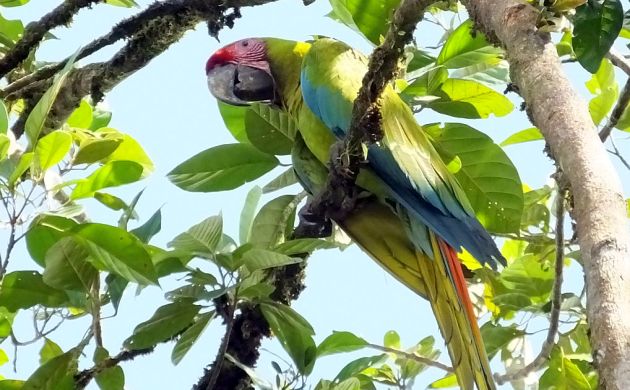
Even second growth could reward yard birders with beauties like White-collared Manakin, Golden-hooded Tanager, and the smart looking Black-cheeked Woodpecker.
The Dry North
On the Pacific side of the country, the northern half boasts dry habitats that share some of the birds as my yard along with a good number of big, beautiful birds that I do not see. Those would be species like Turquoise-browed Motmot, White-throated Magpie-Jay, and Double-striped Thick-Knee. Birders near wetlands could also see a variety of wading birds along with interesting raptors like Crane Hawk and Hook-billed Kite.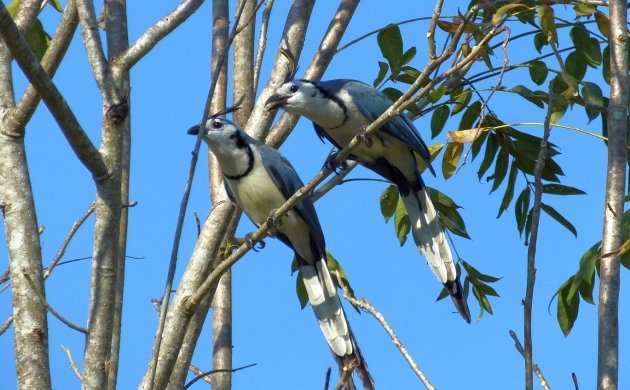
The South Pacific
It sounds like Polynesia but in Costa Rica, this just refers to the southern, more humid part of the Pacific slope. It’s hot as heck but the birding is always good. In many places, Scarlet Macaws are the norm, Olivaceous Piculet can share avian space with Long-billed Starthroat and Gray-headed Tanager, and there are literally hundreds of other birds to look at. Lucky birders who live around Perez Zeledon even have a chance of seeing Turquoise Cotinga whereas the folks in San Vito could easily watch Speckled Tanagers, Lesser Elaenia, and Scaled Pigeons in the same birdy yard.
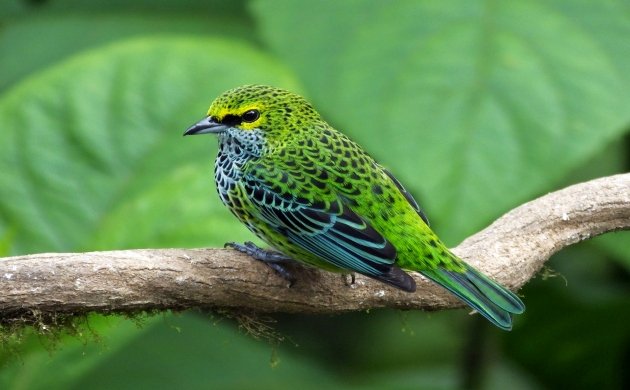
Naturally, what we see in the yard depends on a variety of factors not the least of which is geographic location. Yard lists in Costa Rica reflect the radical differences shown by avian communities in sites just 50 kilometers away from each other. A a birder might imagine, this always makes for exciting birding but in the meantime it will still be interesting to see what flies into each of our respective patches. Good yard birding, stay safe and study those field guides!













Leave a Comment